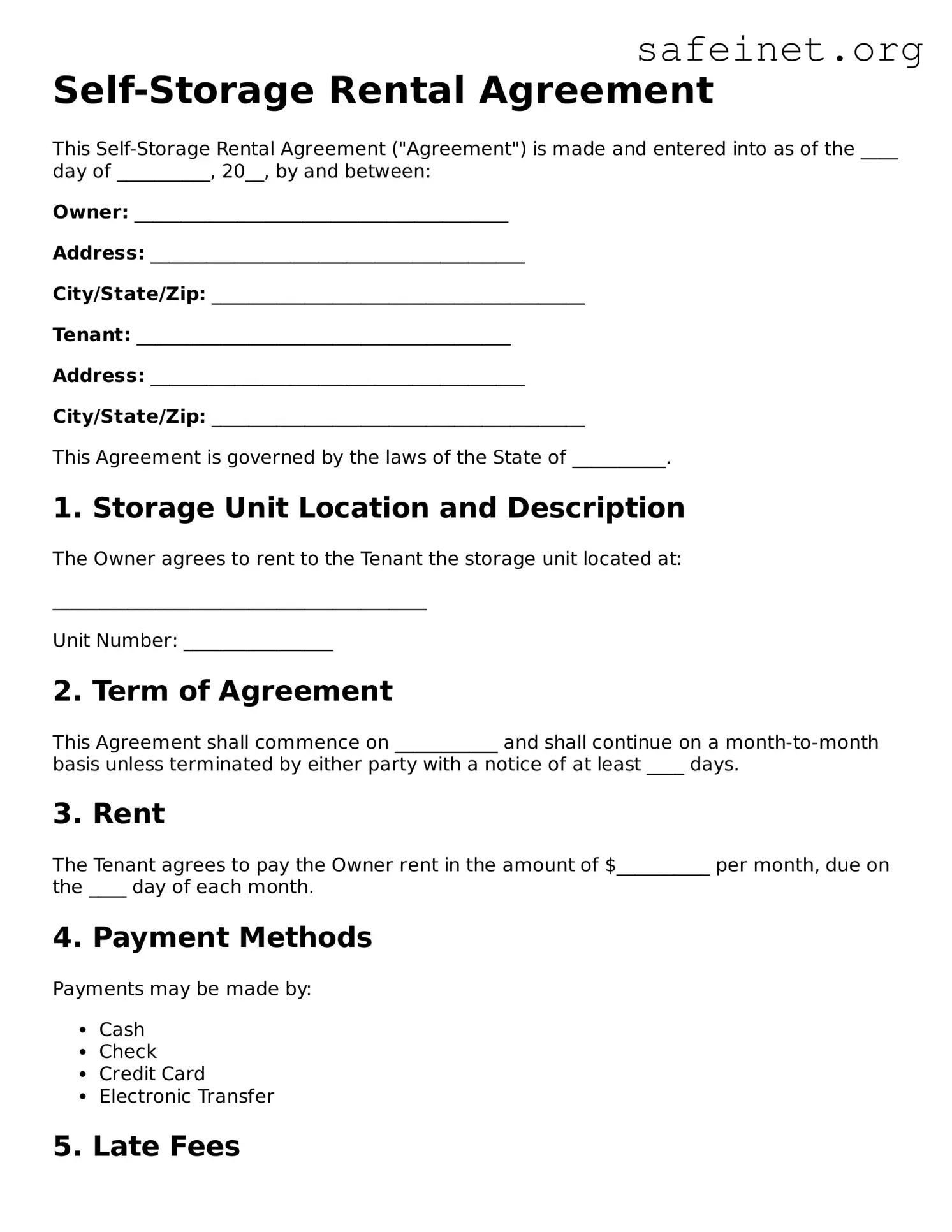Self-Storage Rental Agreement
This Self-Storage Rental Agreement ("Agreement") is made and entered into as of the ____ day of __________, 20__, by and between:
Owner: ________________________________________
Address: ________________________________________
City/State/Zip: ________________________________________
Tenant: ________________________________________
Address: ________________________________________
City/State/Zip: ________________________________________
This Agreement is governed by the laws of the State of __________.
1. Storage Unit Location and Description
The Owner agrees to rent to the Tenant the storage unit located at:
________________________________________
Unit Number: ________________
2. Term of Agreement
This Agreement shall commence on ___________ and shall continue on a month-to-month basis unless terminated by either party with a notice of at least ____ days.
3. Rent
The Tenant agrees to pay the Owner rent in the amount of $__________ per month, due on the ____ day of each month.
4. Payment Methods
Payments may be made by:
- Cash
- Check
- Credit Card
- Electronic Transfer
5. Late Fees
If payment is not received within ____ days of the due date, a late fee of $_________ will be applied.
6. Use of Storage Unit
The Tenant agrees to use the storage unit solely for the storage of personal property. The storage of hazardous materials, illegal items, or perishable goods is strictly prohibited.
7. Access to Storage Unit
The Tenant shall have access to the storage unit during the hours of ____ to ____, seven days a week.
8. Liability
The Owner is not responsible for damage to or loss of any items stored in the unit. The Tenant is encouraged to obtain insurance for stored items.
9. Termination
Either party may terminate this Agreement with a written notice at least ____ days prior to the desired termination date.
10. Governing Law
This Agreement shall be governed by and construed in accordance with the laws of the State of __________.
11. Signatures
By signing below, both parties acknowledge that they have read and understood this Agreement and agree to its terms.
Owner’s Signature: ____________________________ Date: ______________
Tenant’s Signature: ___________________________ Date: ______________
